Moscow New NCCA entry by AND-RÉ
By Bustler Editors|
Wednesday, Oct 9, 2013
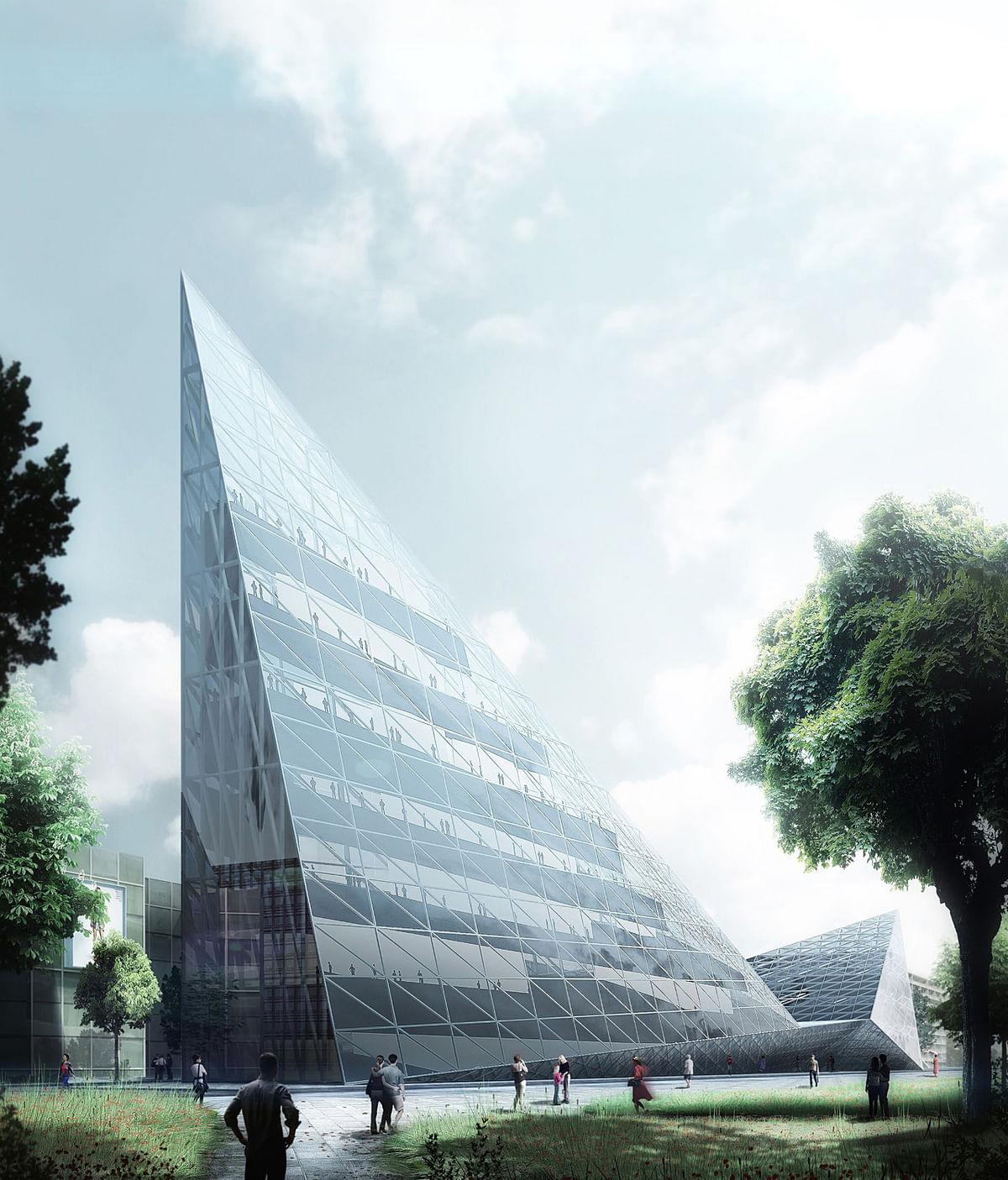
Related
The international architectural competition for Moscow's new National Center for Contemporary Arts (New NCCA) recently shortlisted ten firms for its second stage. Although not selected to move on in the competition, here is the New NCCA entry by Portuguese firm AND-RÉ.
Read on to see the project in detail.
CONTEXT
"Art should be aware, be shown and shared, reflect and interpret to provide reflection and interpretation. Art should contribute to evolution.
In this context, a building to exhibit art should aim for the same purposes. It must be aware, react, reflect, engage provoke and its design must be social driven.
It is not just a space to place art. Its architecture should be meaningful and have a reach and impact that goes beyond its physical limits. It must be attractive, seductive and engaging, not only as multi cultural hub, but also as a dynamic social centre.
A building that does not superimposes itself to the visitor, yet allows a freewill experience that goes parallel with the democratic essence of the proposal."
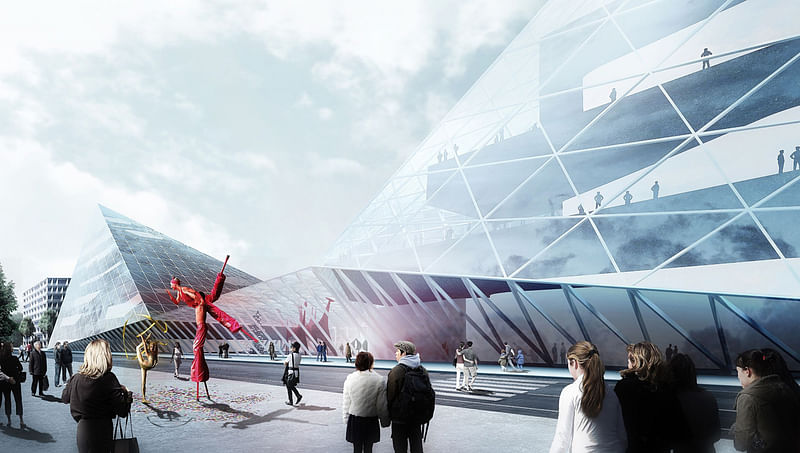
"The architecture identity aims to relate itself with the global contemporary world. Therefore, the concept goes beyond the conventional museum organization, structured in a logical interface that doesn’t neglect the standard needs for art exhibitions. A building that interacts with the visitor and the citizen through its defying shape and its physical properties.
This proposal for the NCCA represents the consolidation of this ambitious global vision, achieved through an architecture that doesn’t try to define the future, but willing to let the future - and art - define itself."
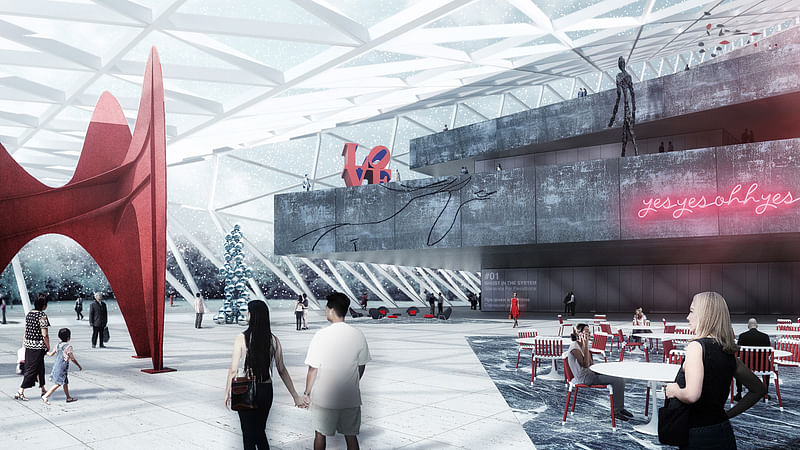
APPROACH
"A building that reflects the environment, a transparent exterior skin that reacts with the surroundings and provokes, seduces and attracts the visitor.
A plural building that is opened for the people, visually and physically. A building that reveals a glimpse of its inner organization system, but at the same time attracts the visitor to discover more.
A rational organized architecture, conscious of the existence of future unknown necessities, allowing the adaptation to programmatic flexibility in a more than ever fast changing world."
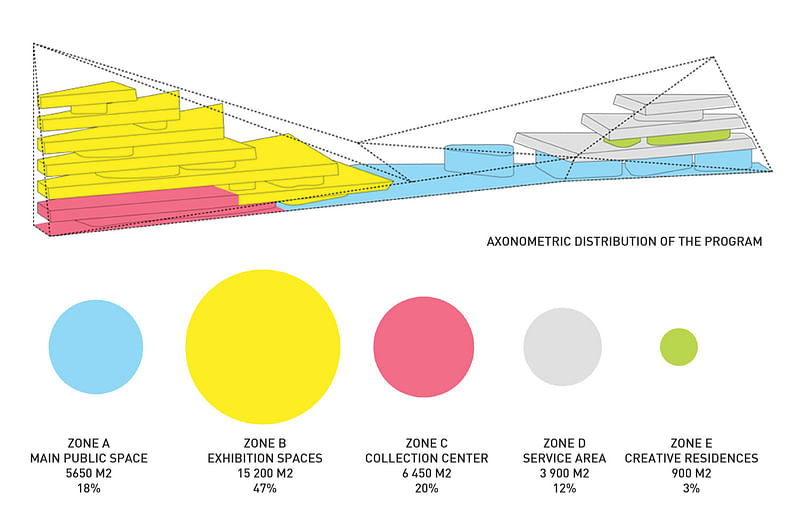
"The building has a first level of engagement through the exterior slick defying shape. One that not intend anonymity or discretion, but neither aims for a shallow pursue of form. One that assumes its iconographic relevance, but is at the same time sensitive to the environment, the surroundings, the context and the program and promoter ambitions.
A second level of user relation understood as a continuity of the exterior public space into the interior of the building. A massive social space filled with natural light and allowing visual connection with the exterior."

"A public buffer zone created by all the void space between the closed programmatic volumes and the outer shape. A total permeable public space, allowing multi actions, encounters, exhibitions, performances or just allowing the crossing. This public place provides the first contact between the visitor and the art, in a genuine immediate way. This is the first step in the essential building purpose that is to relate people with art."
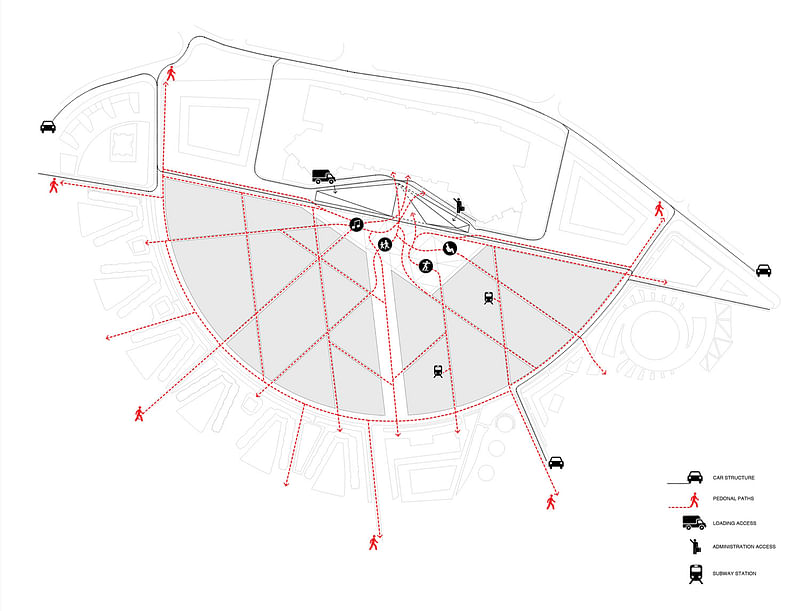
"A third level of use defined by programmatic volumes. Their organization is the basis of the system. The organization is rational and aims to offer great flexibility and plurality. The main program is therefore mainly developed on these volumes, responding to all the demands of a wide and multi-characterized program. The rational inner system, like a body, is adapted to the exterior skin, in mutual relation."




Project Details:
Scope: Competition Proposal
Location: Moscow, Russia
Date: 2013
Promoter: The Ministry of Culture of Russian Federation
Area: 46,500 m2
Architecture: AND-RÉ
Team: Bruno André / Francisco Salgado Ré // Catarina Fernandes / Fernando Ferreira / Filipe Paixão

Share
0 Comments
Comment as :